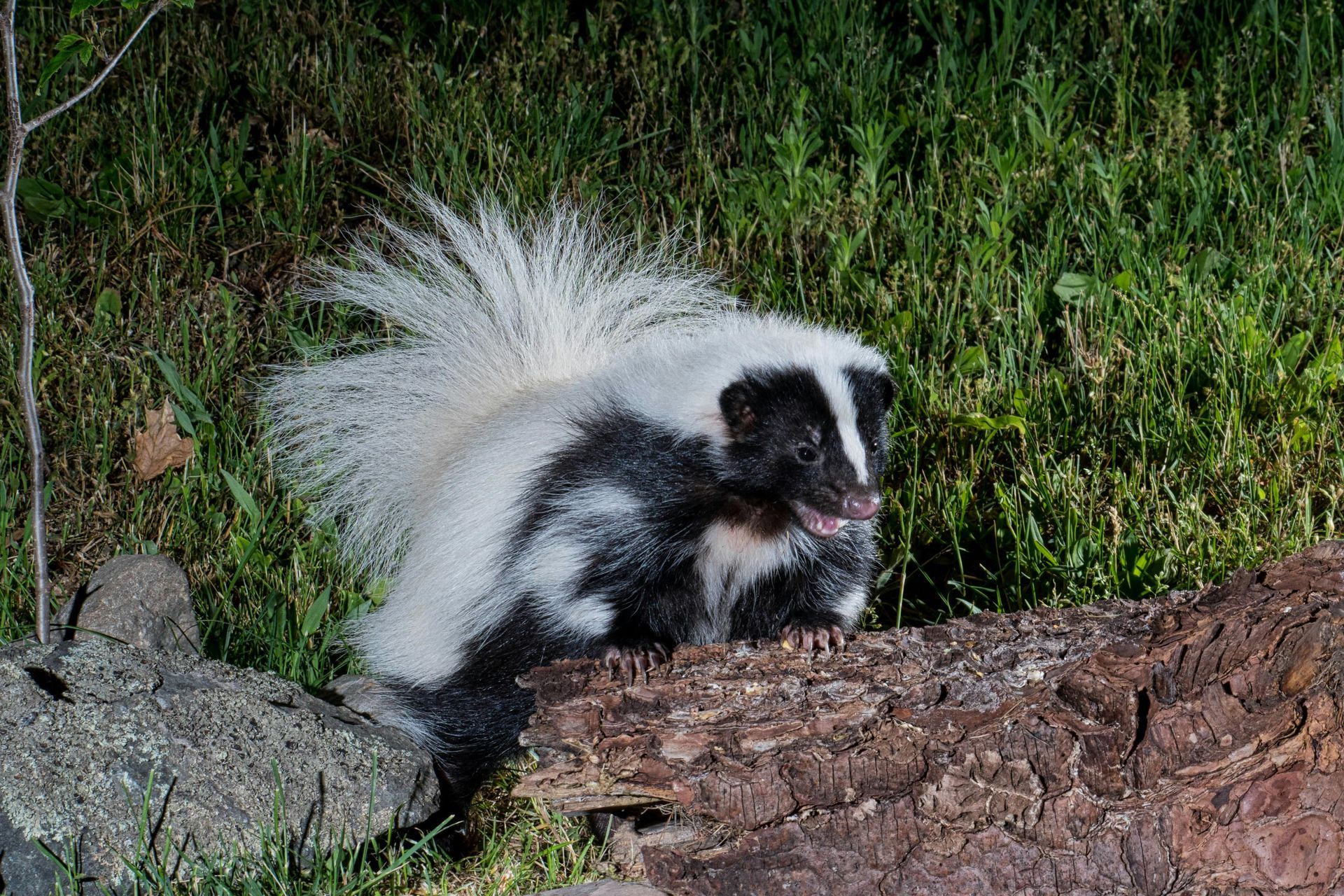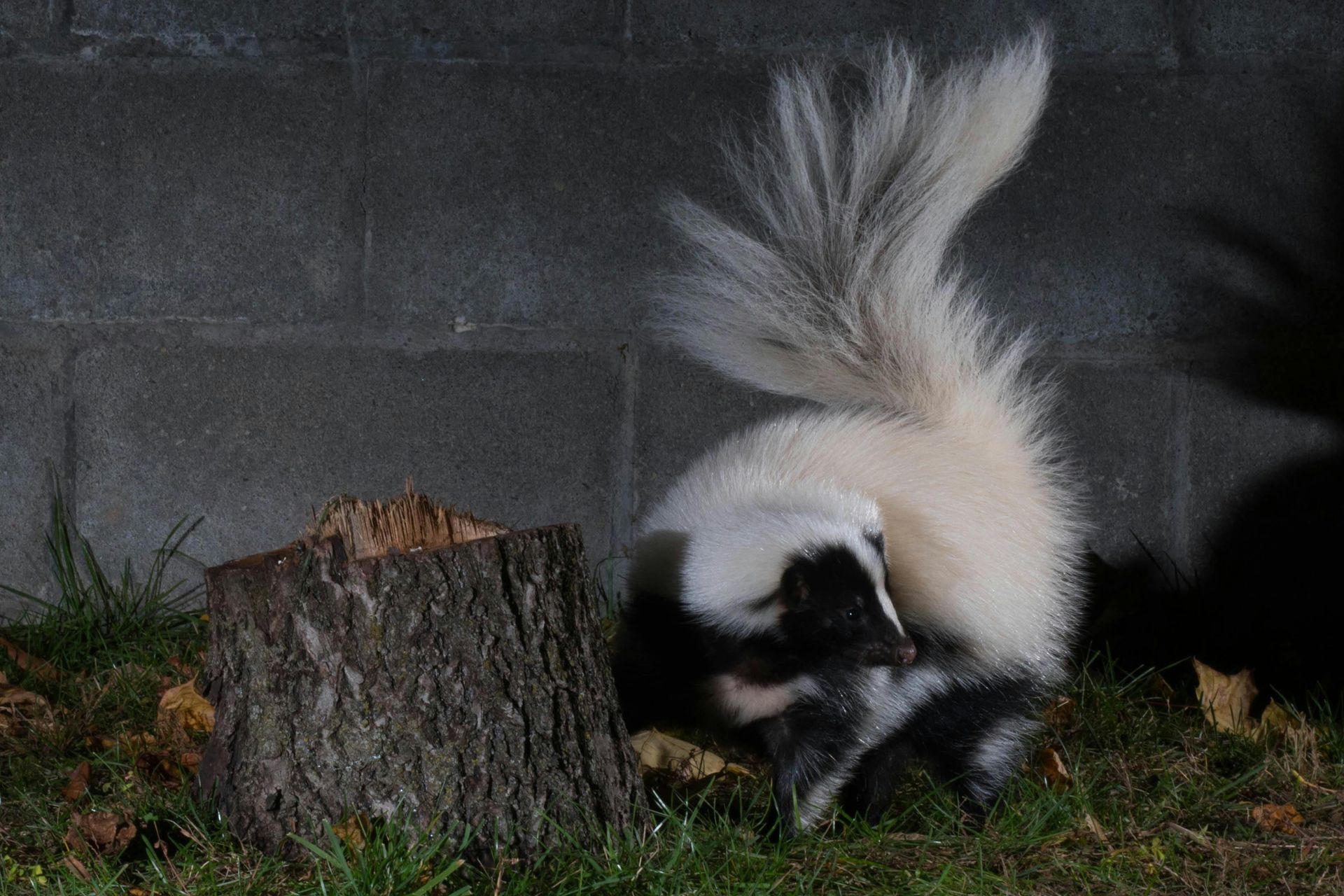Skunks are small to medium-sized mammals known for their distinctive black-and-white markings and their unique defense mechanism—a potent spray used to deter predators. Found throughout North and Central America, skunks inhabit forests, grasslands, and urban areas. They play a crucial role in ecosystems by controlling insect and rodent populations.
Most skunks measure between 20-30 inches in length and weigh 4-10 pounds. Their fur patterns can vary between species, but all skunks have some form of contrasting black and white coloration. Common species include the Striped Skunk and the Spotted Skunk. Skunks are omnivorous, feeding on insects, small mammals, fruits, and plants.
Skunks are primarily nocturnal and are known for their slow, deliberate movements. During the breeding season, females give birth to litters of 4-7 kits, which they raise alone. Kits remain with their mother for several months before becoming independent.
Natural predators include owls, coyotes, and foxes, although most predators avoid skunks due to their defensive spray. Human-related threats such as vehicle collisions and habitat loss pose significant risks to skunk populations. Despite these challenges, skunks have adapted well to urban environments.

For your safety and the well-being of wildlife, please observe animals from a distance and avoid touching or disturbing them. If you encounter an animal that appears injured or in distress, contact a licensed wildlife rescue organization for guidance before intervening.
Found An Animal? Not sure how to help a wild animal in need? Learn when to step in, who to call, and how to help safely.
Did You Know?
- Skunks can spray their foul-smelling musk up to 10 feet with remarkable accuracy.
- Skunk spray is highly flammable.
- The chemical composition of skunk spray is so strong it can ward off most predators for life.
- Striped Skunks are immune to venom from rattlesnakes and will hunt and eat them.
- Spotted Skunks perform a handstand as a warning before spraying.
- Skunks help control agricultural pests by eating harmful insects and rodents.
- Skunk kits learn to spray by practicing on each other in playful bouts.
- Skunks are excellent diggers and often create burrows for shelter.
- Despite their reputation, skunks are generally non-aggressive and will only spray as a last resort.
Problems Faced In The Wild
- Vehicle Collisions: Skunks are frequently struck by cars while foraging at night.
- Habitat Loss: Urban development reduces natural shelter and food sources.
- Human-Wildlife Conflict: Skunks are often seen as pests and removed from residential areas.
- Predation: While many predators avoid skunks, some opportunistic species still pose a threat.
- Climate Change: Altered weather patterns can affect food availability and shelter conditions.
- Disease: Skunks can suffer from diseases such as distemper and mange in the wild.
Tips For Cohabitation
- Secure Trash Bins: Use wildlife-proof containers to prevent skunks from scavenging.
- Seal Entry Points: Prevent skunks from nesting under porches or in crawl spaces by sealing access points.
- Avoid Using Poisons: Choose humane pest control methods to protect skunks and other wildlife.
- Provide Natural Shelter: Allow brush piles or natural areas for skunks to find shelter.
- Keep Pets Supervised: Reduce the risk of encounters by keeping pets indoors at night.
- Educate Others: Share the ecological benefits of skunks in controlling pests and maintaining balance in ecosystems.



